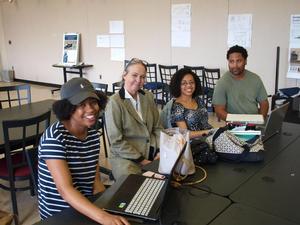The Hampton University Department of Architecture has been named a National Resilience Initiative network, a collection of six design studios across the nation that serve their local communities preparing for and adapting to natural challenges. The HU Department of Architecture will be the representative for the Mid-Atlantic region and the designated center on the study of adaptation to sea level rise.
“Our designation is an enormous honor and responsibility,” said Mason Andrews, associate professor in the HU Department of Architecture. “The department’s on-going interest in engagement with urban communities has led to a leadership role in an emerging field. We may be the slightly damp canary in the coal mine here in Hampton Roads, and have the opportunity to develop adaptation strategies useful to other communities as they eventually face the challenges on which we’re working. What a privilege!”
The six chosen design studios in the National Resilience Initiative network will continue work in their own communities, but share best practices nationally and identify policy and legislation issues impeding sensible response to an array of current new challenges.
HU’s Department of Architecture was selected due to the past two years of success in the field. An initial project studying adaptation to sea level rise in the National Register of Historic Places listed Norfolk neighborhood of Chesterfield Heights, executed under a small Virginia Sea Grant to Wetlands Watch, resulted in the project’s inclusion in the international design workshop The Dutch Dialogues Virginia: Life at Sea Level. The project was subsequently incorporated into the Commonwealth of Virginia’s entry in the U.S. Department of Housing and Urban Development’s National Disaster Resilience Competition which has now been funded with $120,000,000 for implementation.
HU’s architecture department has also strategically cultivated with students from the Old Dominion University (ODU) Department of Civil and Environmental Engineering and made a commitment to collaborate with a group of engineering students from James Madison University.
The Coastal Community Design Collaborative, the cross-university and cross-disciplinary entity poised to continue design efforts, is headed by Associate Professor of Architecture at HU Mason Andrews and Associate Professor of Civil and Environmental Engineering at ODU Mujde Erten-Unal. They are committed to exploring adaptation strategies for regional neighborhoods through the crucibles of community engagement and collaborative design. Both departments are pursuing the creation of the first cross-disciplinary cross-university concentration in adaptation to sea level rise, a first for the region.
Reprinted with permission from Director of University Relations – Hampton University.

